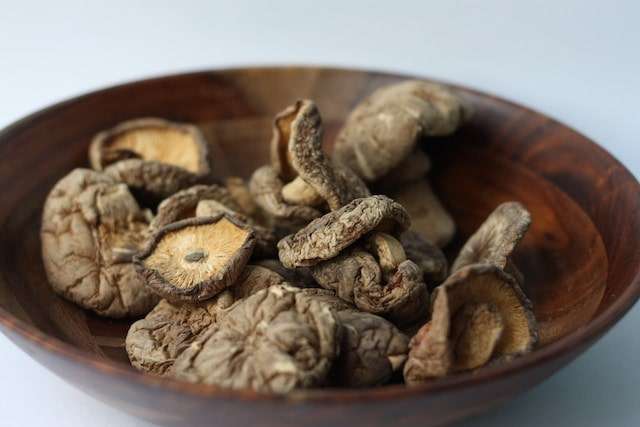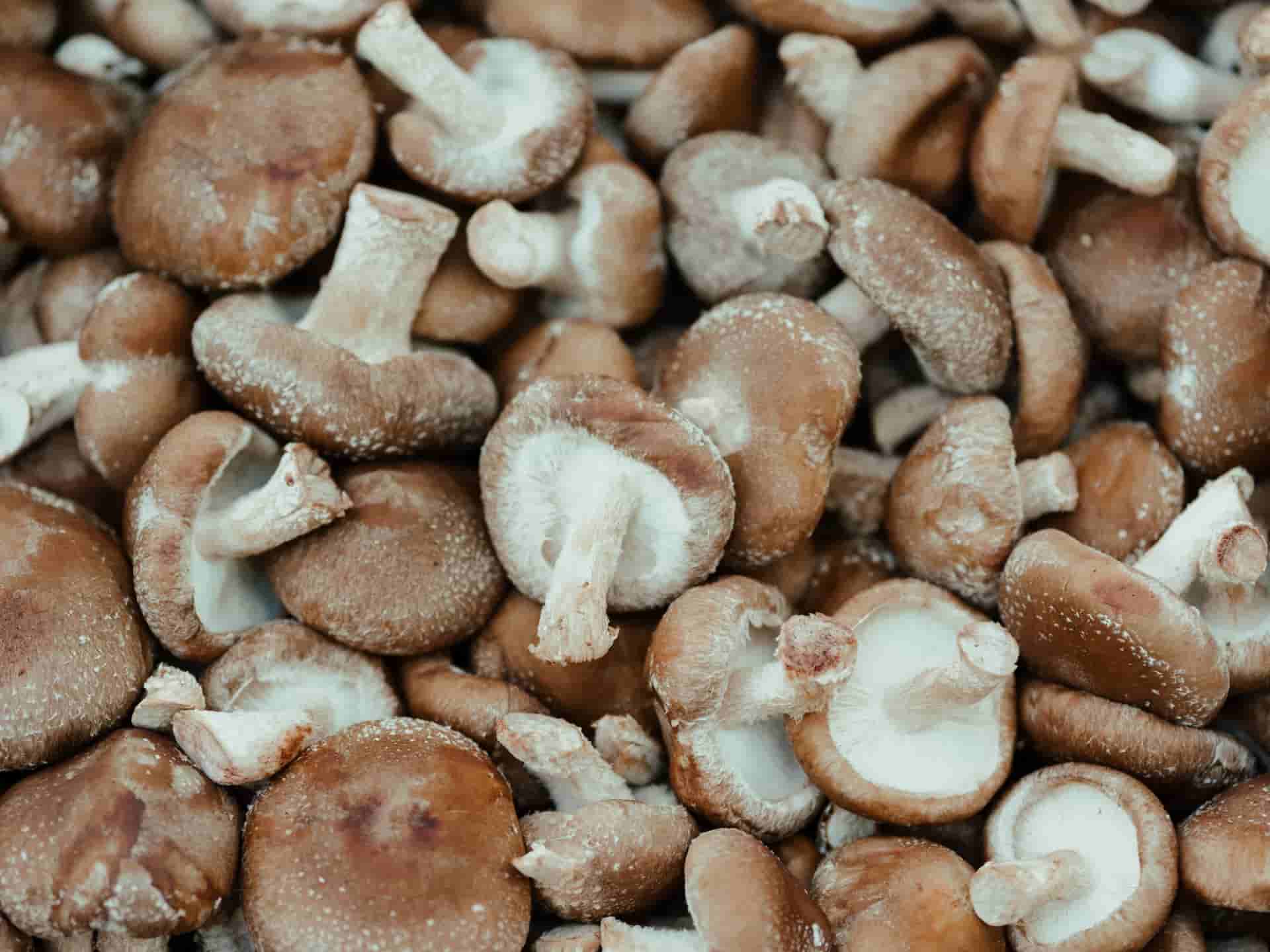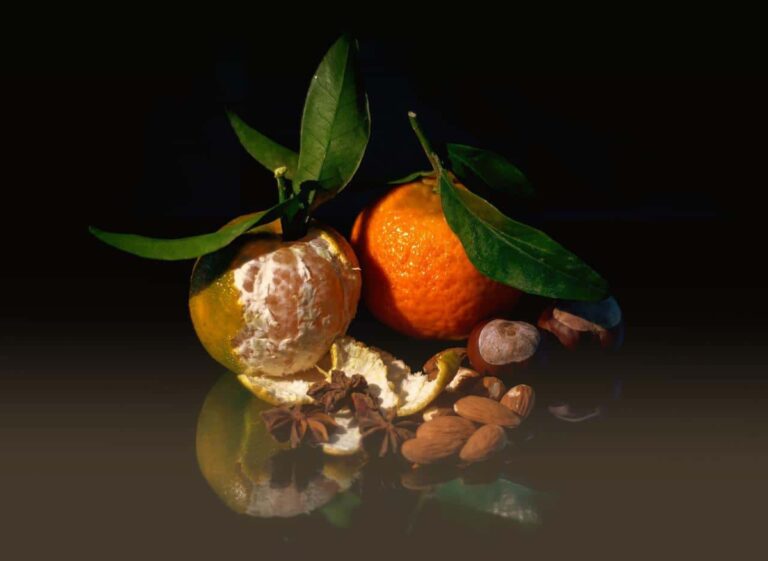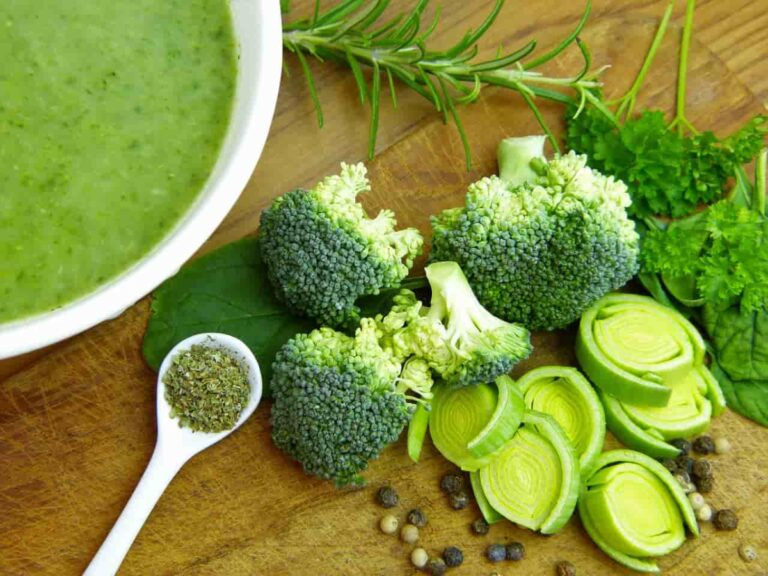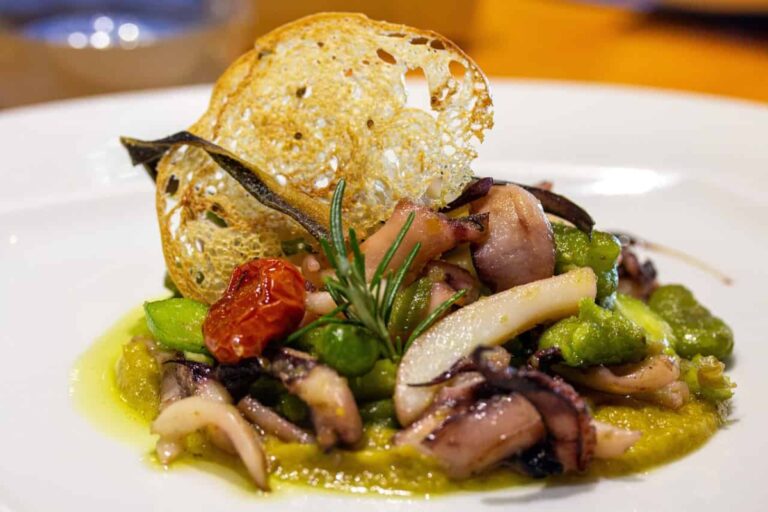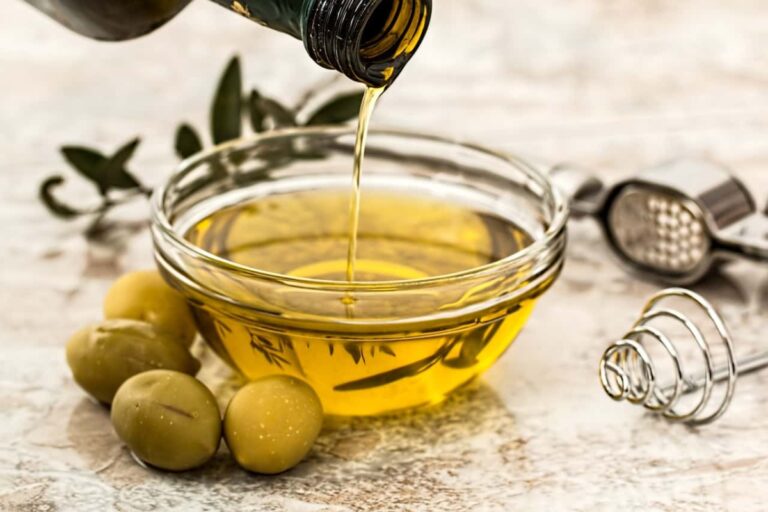Shiitake mushroom 101- kitchen insights and benefits
Did you know that Shiitake mushrooms were exclusively found in East Asia and that they were originally grown on natural oak logs?
- The word “shii” in Japanese refers to an evergreen tree species that often supports the growth of mushrooms. In Latin, these fungi are referred to as Lentinula edodes; however, in English, they are also sometimes referred to as black forest mushrooms or Chinese black mushrooms.
- There is a good chance that Lentinula edodes is the most sought-after gourmet mushroom in the world. Additionally, it is one of the mushrooms that is farmed the most, coming in second only to the ubiquitous white button.
- Clusters of shiitake mushrooms may be seen growing on decomposing hardwoods such as poplar, oak, beech, maple, and shii. The donko, which is a highly prized mushroom that is more spherical with thick meat, and the koshin, which is a mushroom with thinner flesh and an open cap, are the two primary forms of Shiitake mushrooms that can be found in Japan. Both types of Shiitake mushrooms may be found in Japan.
- Although shiitake mushrooms are delicious when used in cooking, they have also been valued for their medicinal properties for ages. Shiitake mushrooms were used (and still are) as a treatment for a wide variety of ailments in China, including colds, headaches, and constipation. Additionally, it is believed that they make one live longer.
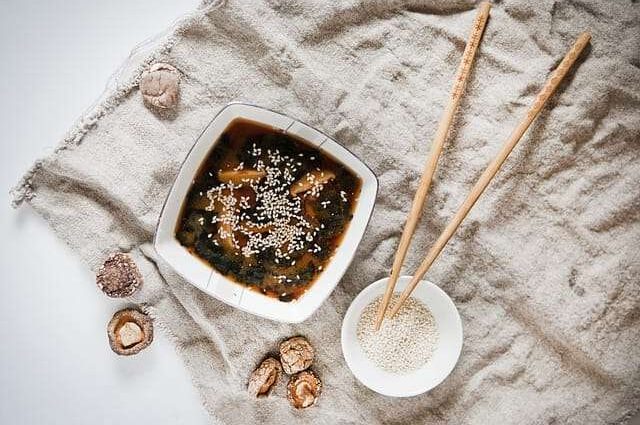
Shiitake mushroom nutrition values and health benefits
- Shiitake mushrooms provide a wide variety of nutrients, including vitamins and minerals. Some shiitake mushrooms are irradiated with UVB radiation in order to boost their vitamin D content, which has important nutritional implications. Zinc and manganese are naturally present in shiitake mushrooms, and these mushrooms are also exceptional sources of the minerals copper and selenium.
- B5, thiamine, riboflavin, folate, niacin, and B6 are the types of B vitamins that may be found in shiitake mushrooms. Additionally, shiitake mushrooms are an excellent source of choline, which is a nutrient that is necessary for both the process of metabolism and the production of the neurotransmitter acetylcholine.
- It has been suggested that consuming shiitake mushrooms may enhance the nutritional quality of plant-based eaters, increase heart health, lower the risk of prostate cancer, assist with gingivitis, and raise immunity. Since the beginning of alternative medicine, they have also been used as natural treatment options.
- Mushrooms are an excellent alternative to processed meats since they are naturally low in salt and do not contain any saturated fats. This makes them a heart-healthy meal choice. Shiitake mushrooms contain beta-glucan, a form of soluble fiber that has been shown to be beneficial for lowering cholesterol levels. The potassium content in shiitake mushrooms contributes to the mushroom’s ability to lower blood pressure.
- The main causes of gingivitis, a dental condition that is preventable by maintaining good oral hygiene, are plaque build up and the presence of “bad” bacteria in the mouth. This bacterium harms the gum tissues, which may also result in issues like periodontal disease. According to a number of studies, the extract of shiitake mushrooms may inhibit the growth of dangerous bacteria while maintaining beneficial bacteria levels.
- A consistent supply of copper in one’s diet is important for preventing copper insufficiency since the body can only store a limited amount of copper. Copper is essential for most adults’ bodies, and one cup of cooked shiitake mushrooms has more of it than is necessary on a daily basis. Copper is an essential element for the immune system because it promotes the development and function of a wide variety of immune cells, such as T cells and antibodies.
- In most cases, the best sources of zinc are red meat, poultry, and shellfish. Shiitake mushrooms are rich in a variety of nutrients that are beneficial to vegetarians and help lower the risk of nutritional deficits. Zinc may be found in quite high concentrations in shiitake mushrooms.
- Although shiitake mushrooms are not often thought of as frequent allergens, it is not impossible to have an allergic reaction to them. Even though it is an incredibly uncommon occurrence, there is evidence that handling shiitake mushrooms might trigger asthma in some people. Consult your healthcare professional about being tested for shiitake mushroom allergies if you have any worries about having an allergy to these mushrooms.
- Raw shiitake mushrooms have been linked to dermatitis in some people. Some people break out in a rash when they come into contact with lentinan, which is a poisonous chemical found in uncooked shiitake mushrooms. If you prepare shiitake mushrooms before ingesting them, you won’t experience this response at all, despite the fact that it goes away on its own after about a week.
100g of shiitake has 33 calories (138 kJ), 2.2g protein, 0.5g fat, and 7g carbs, including 2.5g of fiber.
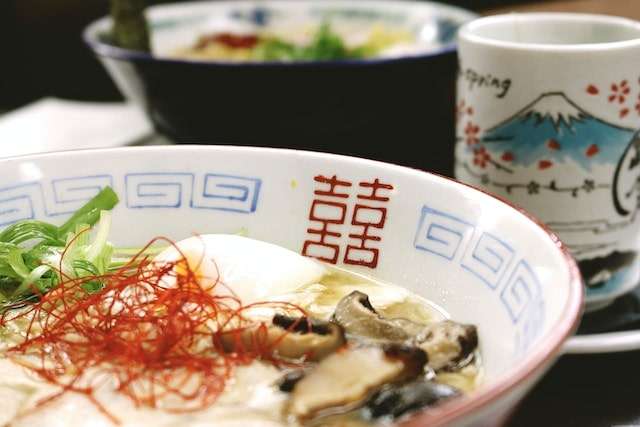
How to store shiitake mushrooms and how to buy them
- Putting fresh shiitake mushrooms inside a paper bag is the method that will ensure they will maintain their quality and freshness for the greatest amount of time. You can buy a variety of mushrooms pre-packaged in plastic containers of various shapes and sizes. When this occurs, it is preferable to remove them from the plastic (or only the top), cover them with a paper towel, and either put them in a paper bag or remove the top of the plastic container.
- Keeping shiitake mushrooms in the refrigerator is the best way to extend their shelf life to around two weeks. After being sliced, the freshness of the shiitake mushrooms is diminished for a shorter period of time. After being sliced, the shelf life of shiitake mushrooms in the refrigerator drops from two weeks to seven to three days.
- When storing shiitake mushrooms, it is recommended that you place them in the drawer of your refrigerator. The drawers in many refrigerators are designed to hold cheese, vegetables, or fruits, depending on the model. If you want to maintain its high quality, you should store it in the vegetable drawer or the crisper.
- If you need to keep these mushrooms for an extended period of time, the freezer is an excellent option. The shelf life of shiitake mushrooms in the freezer is around one year, but, after they have been thawed, their quality will no longer be the same.
- When freezing shiitake mushrooms, you will want to store them in a container that prevents air from getting in. Because raw shiitake mushrooms do not freeze very well, cooking them first is recommended before putting them in the freezer. Sautéing the mushrooms and then transferring them to a container with a tight-fitting lid is the simplest method to do this task. Always be sure to clearly note the date that the items were placed in the freezer. You may also add spices to the mushrooms before freezing them, which will make things simpler to do in the future.
- The following are some clear and not-so-clear symptoms that the mushrooms you have ought to be thrown out immediately:
- They have a slimy feel. When it comes to determining whether or not mushrooms are still edible, the most important rule of thumb to remember is that if they have a slimy appearance, they should not be consumed. Mushrooms that have been stored in the refrigerator for an excessive amount of time often develop a slimy texture. Even if there is no proof that they are harmful at this stage, it is still considered good practice in the kitchen to throw them away.
- They have creases in their skin. It is possible for older mushrooms to remain dry and wrinkled rather than becoming slimy as they age. Even though it’s OK to let your mushrooms dry out a little bit (since they are already rather wet veggies), you don’t want them to wrinkle too much. If they seem to have shrunk quite a bit, it is best to throw them away rather than ingest them.
- They are becoming darker overall or have areas of darkness. If your fungus has dark patches, this indicates that they are beginning to rot. The most important thing you can do is make sure that you keep a close eye on your mushrooms the whole time that they are stored in the refrigerator. If you find that they are becoming darker or growing black patches, it is time to start using them or you will lose them.
- At the very least, they’ve been around for two weeks. When it comes to the mushrooms’ shelf life and the amount of time they can be stored for, most people agree that the absolute most time they can spend in the refrigerator is around two weeks. Using common sense and your best judgment is something you should always do, of course. If it has been slightly more than two weeks since you last used them, but they still look, smell, and feel great, it is likely that they are safe to consume.
- They give off an unpleasant odour. Your mushrooms shouldn’t have an odour that is easily detectable or overpowering. If you are able to smell them, then they have already spoiled. Naturally, if you go very close to them, you’ll be able to smell something like mushrooms, but it ought to be very mild and unobtrusive. If, after picking up the bag and opening it, you feel the need to tilt your head, you probably have spoiled mushrooms. Get rid of them right now!
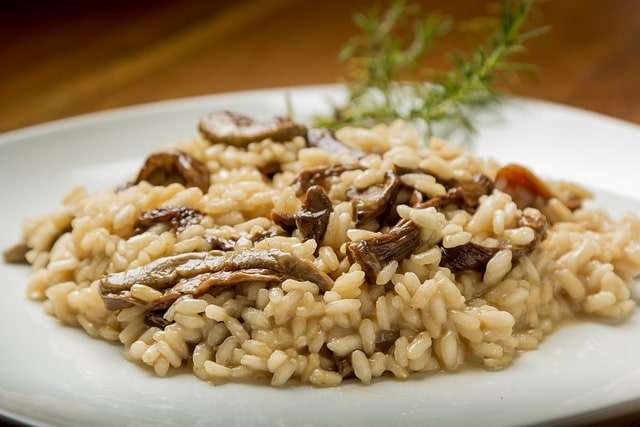
Cooking techniques, secrets, and tips from the kitchen
- Brown caps that are convex in shape (like an umbrella), off-white gills, and tan stems are the distinguishing characteristics of shiitake mushrooms. The caps themselves may be as little as less than one inch in diameter or as large as ten inches in diameter, and they often have white fissures on their surfaces, which might suggest a mushroom with a more robust flavour.
- Because they contain a lot of the amino acid glutamate, they have a lot of umami. While the caps of cooked shiitake mushrooms have a velvety, meaty feel, the stems of the mushrooms may be rough or, if cooked for a long enough period of time, they can have a delightful chewy texture.
- There is a way that should be used in the best possible circumstances, as well as a method that should be used if you are feeling lazy:
- Bowl technique: To start, fill up a big dish with water. To the water, add the mushrooms and toss them about for about a minute, until most of the dirt has settled to the bottom of the pan. Take it out of the dish and dry it with paper towels.
- The technique of straining: Alternately, if you want to take the easy way out, you may just lay the mushrooms in a colander and then mist them with water until the dirt is removed. The mushrooms should then be patted dry.
- Remember that you should “shower” rather than “bath” the mushrooms, since this applies to both of the preparation procedures. It is imperative that you extract the mushrooms from the water as soon as you possibly can.
- When preparing shiitake mushrooms, it is necessary to cut away any rough portions on the stems or the whole stem altogether. It is not necessary to remove the stems if they are soft enough to chew. They are an excellent source of flavour and may be used in combination with the caps of the mushrooms. Use a sharp chef’s knife or a mandoline slicer to cut your shitake mushrooms into the proper shapes and sizes.
- When preparing shiitake mushrooms, you have many options for how to prepare them: you may slice them, cut them into pieces, or even utilise them in their full form, depending on the recipe and the technique you choose to use. While smaller portions are ideal for use in soups, stuffing’s, and sauces, slices are great for serving as a side dish.
- Dried shiitake mushrooms, which are widely available in Asian grocery shops, often have a flavour that is more powerful than that of the fresh kind and may survive for months or even years when properly stored.
- Soaking dried shiitake mushrooms, gills down, in hot water to rehydrate until soft, about 20 minutes, or soaking dry mushrooms in water at room temperature overnight, is the best way to prepare dried shiitake mushrooms for cooking.
- The rehydrated mushrooms should be squeezed to remove any extra water.
- For a speedy vegetable stock, strain the liquid that the mushrooms were soaking in.
- If you don’t intend to use the stems of the dried shiitakes right away, you may cut the stems off of the dried shiitakes while they are still dry and then only soak the caps.
- Have you soaked more than enough mushrooms? After they have been rehydrated, dried mushrooms may be kept for several days in the refrigerator in a container that is airtight.
- Eggs prepared in any manner, whether fried, scrambled, or poached, are a delectable addition to shiitake mushrooms as a main course or side dish. Shiitake mushrooms are especially wonderful when prepared with dairy products (butter, cream, and cheese), earthy spices (cumin, nutmeg, and caraway), herbs and nuts, soy sauce, garlic, ginger, sesame oil, and a variety of other cooking methods.

History of shiitake mushroom from the beginning until today
- Shiitake mushrooms were first cultivated in China in 1209, during the Song Dynasty. This is the oldest record of its cultivation that has been found. This gives it the distinction of being the mushroom that has been farmed the longest.
- The word “mushroom” was derived from the Japanese word “shii,” which refers to the tree that the shiitake mushroom grew on, and “take,” which is also the Japanese word for mushroom.
- In Japan, the shiitake mushroom was produced by chopping down the shii tree, which is related to the oak tree, and then leaning the cut logs against trees that were already producing shiitake mushrooms or were known to contain shiitake spores. In other words, the shii tree was chopped down and the logs were leaned against trees that were already growing shiitake mushrooms. This was one of the first methods for inoculating the logs with shiitake spores so that the mushrooms could be grown and harvested.
- The 1930s saw the beginning of commercial production of shiitake mushrooms, which at the time were cultivated on oak logs. Shiitake mushrooms are prized for their flavour and aroma. In later years, they were cultivated on sterile sawdust, which accelerated the rate of production.
- Today, shiitake mushrooms are farmed all over the globe, either on artificial substrates like sawdust or on hardwood logs like oak logs. Sawdust is the most common kind of artificial substrate. About a quarter of all grown mushrooms in the world are shiitake mushrooms. Shiitake mushrooms are native to East Asia.
- These days, big-scale shiitake mushroom cultivation is done by major mushroom growers, but smaller-scale cultivation of shiitake mushrooms is also done by farmers who want to increase the productivity of their forested land. They are so easy to cultivate that you can even do it on your own back patio or in your backyard garden!
